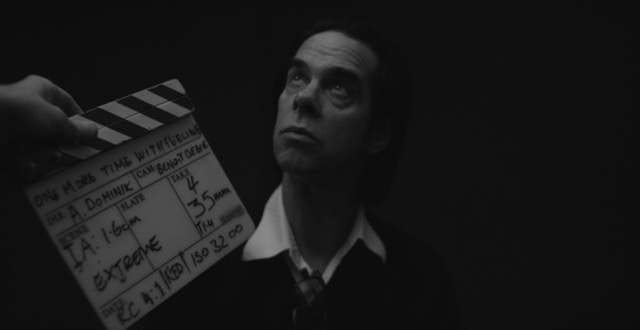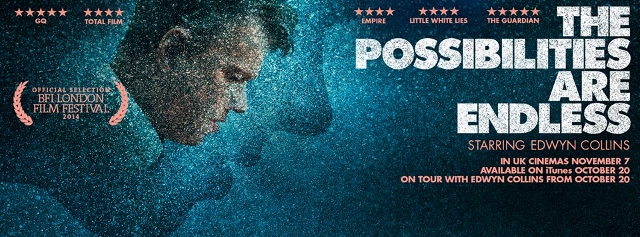It was with some anxiety that I entered the cinema to watch One More Time With Feeling. I’d never felt nerves prior to a film before.
When you’re a fan of an artist and their work means so much to you, it gives you the sense of knowing them personally. So, on hearing the news of the death of Nick Cave’s son last year, I was left with a weird feeling of grief; I spent a lot of time, too much probably, dwelling on how he must be feeling. I presumed we wouldn’t hear him perform again. I was wrong. Not only would Cave be back on stage, he was documenting his coping mechanism.
How does someone cope with such a devastatingly traumatic event? If you’re an artist then you use your art, and if you’re Nick Cave, who seems to express his life through his stories, then what else can you do but that? Does he have any other way to cope? And so we have One More Time With Feeling, released to coincide with the launch of the new Nick Cave and the Bad Seeds’ album, Skeleton Tree.
As the movie started, I tried to use my own coping mechanism by immediately concentrating on its filmic beauty. Amazingly elegant black and white images embraced the screen which, although hard aesthetically, were comforting at the same time. The gorgeous lighting showed every twitch of emotion, and 3D brought us deeper into the feelings discussed by Cave and the people around him.
 We hear Cave commentating on what is happening in the film throughout. We listen to him judging himself and musing on his own anxiety about his performance. His fears that he no longer has his voice, that it has been lost along with his “phone, memory and judgement”. He discusses the nature of song, describing it as though it has a life of its own. But he always returns to the subject of trauma and how a person can be changed until they are unidentifiable, even to themselves.
We hear Cave commentating on what is happening in the film throughout. We listen to him judging himself and musing on his own anxiety about his performance. His fears that he no longer has his voice, that it has been lost along with his “phone, memory and judgement”. He discusses the nature of song, describing it as though it has a life of its own. But he always returns to the subject of trauma and how a person can be changed until they are unidentifiable, even to themselves.
It is the one-to-one interviews where we see Cave at his most lost and vulnerable. He explains feelings and the human character with such precision and composition that it becomes obvious we are watching a man who has spent many, many hours thinking and questioning himself and life.
During these interviews we see just how much Cave has changed. No longer the man who was so confident of his abilities and so sure of his footing in the world; he’s now an individual trying desperately to find something secure in life to cling on to.
That longed-for security is evident in his music, his band and especially his wife, Susie, who is sharing the weight of the devastation – we see them several times together, quiet but solid and philosophical. A particularly heart-wrenching moment is when Susie brings out a painting that son Arthur made when he was just five-years-old. She found the painting shortly after Arthur’s death and realised immediately that it was a painting of the place where he died. After this revelation we are left with two people on screen, silent and awkward. They look newly broken but are nevertheless working hard together to reach the other side, without really knowing what the other side will be like.
There is a beauty in this film as well as absolute openness and dignity in expression by all involved. In years to come, I suspect we will look back on this as one of Cave’s most important works as well as a harrowing and vital documentation of the effects of the grief and how we, as humans, attempt to deal with it.
By Paul Husband
Paul saw One More Time With Feeling at Didsbury Cineworld











